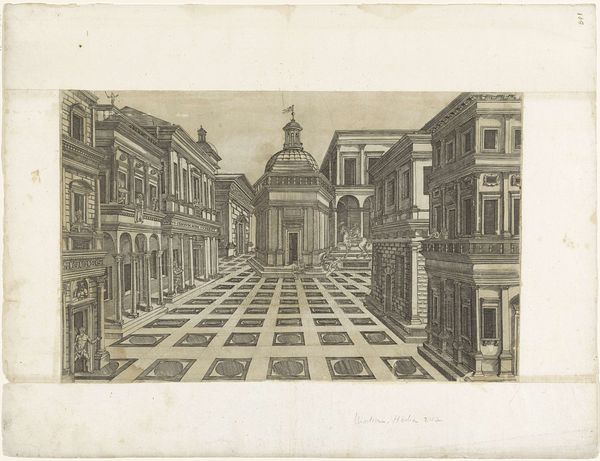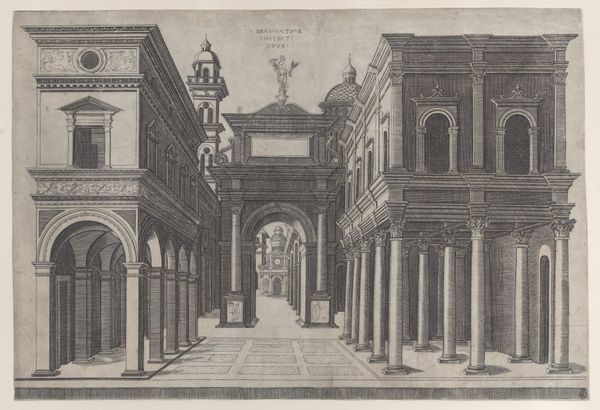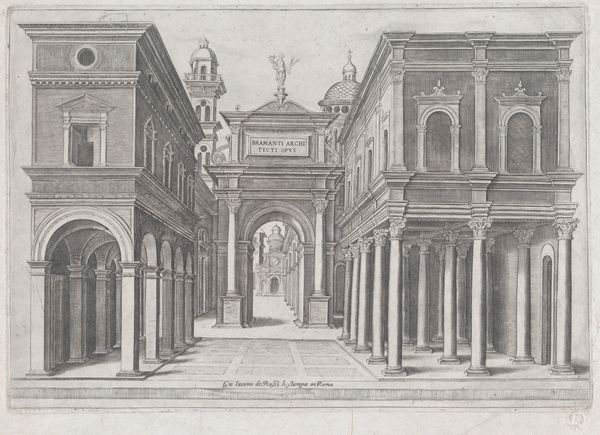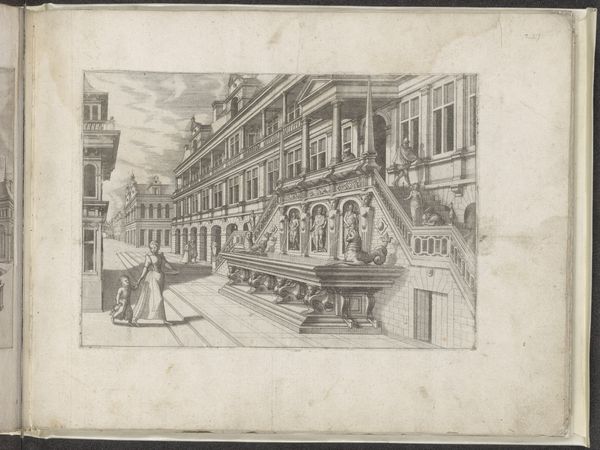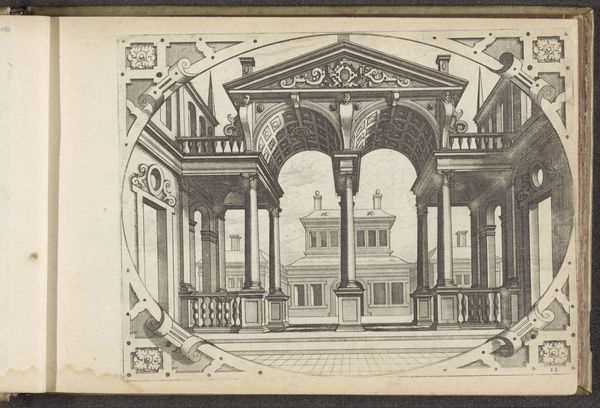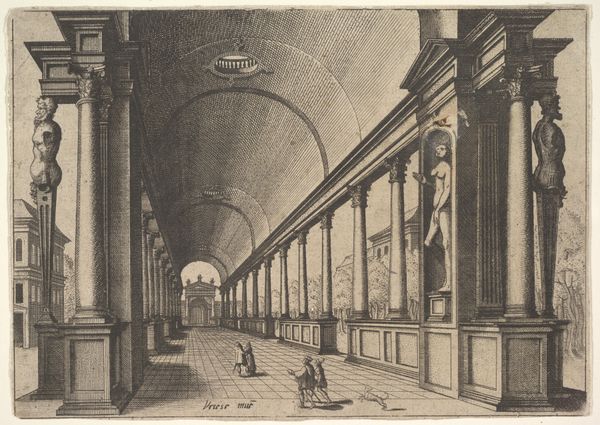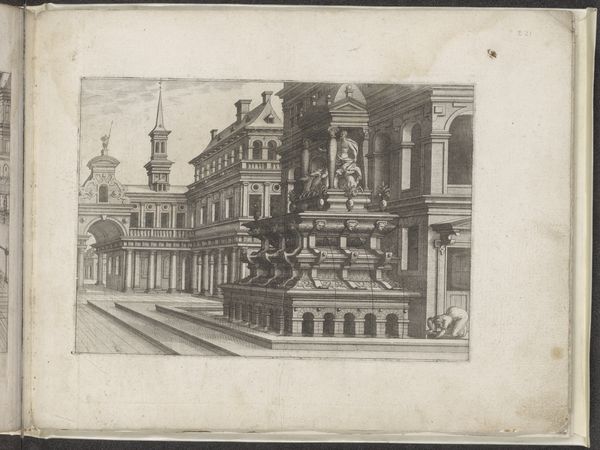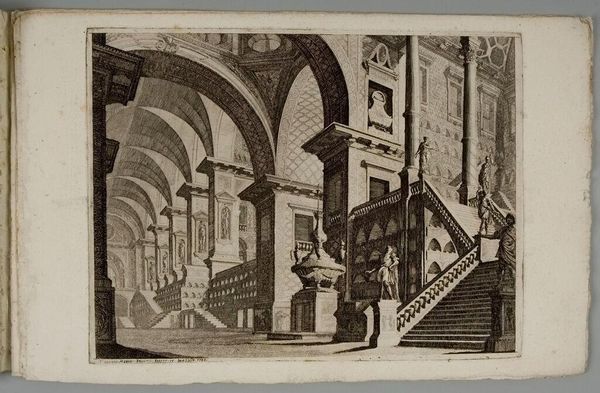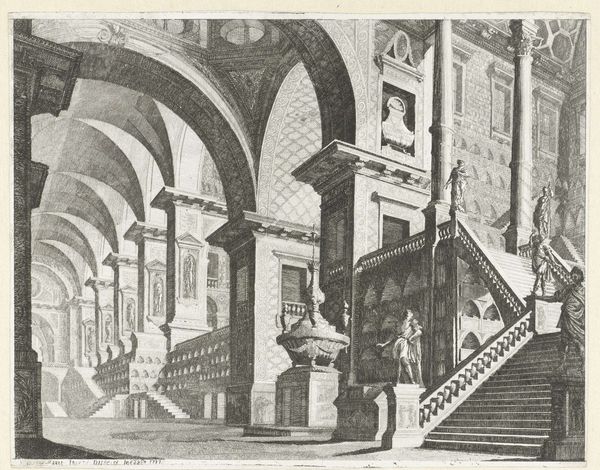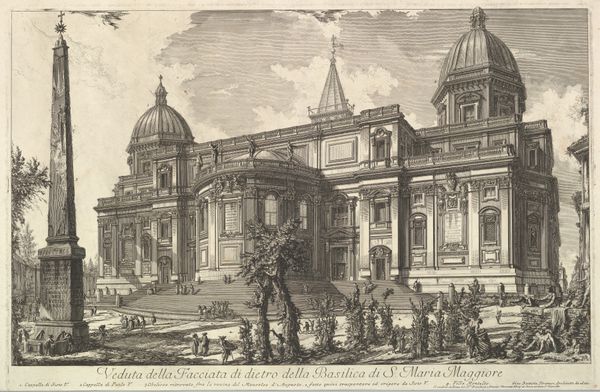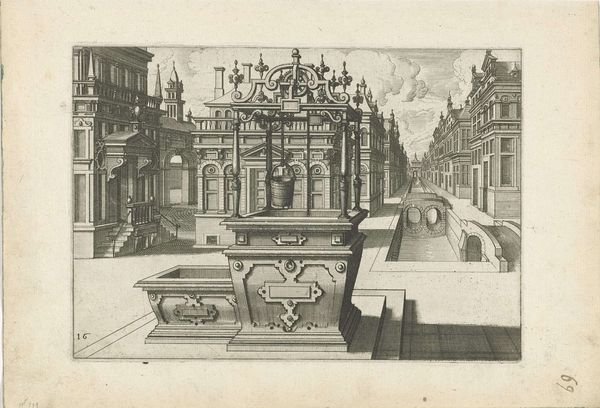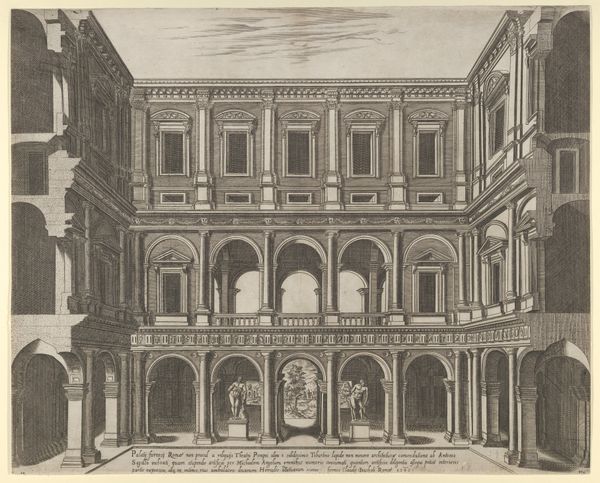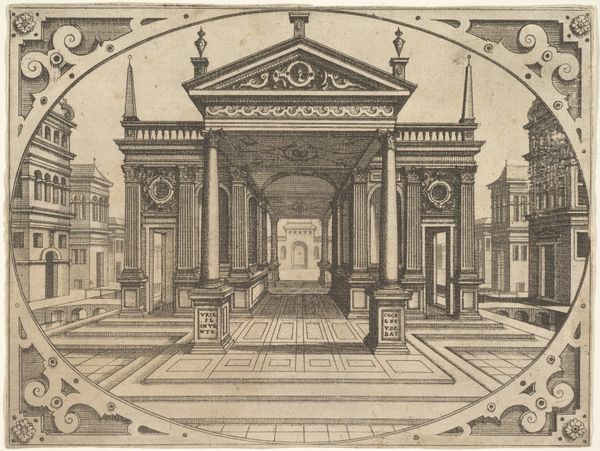
Speculum Romanae Magnificentiae: View of Buildings Adjoining the Capitol 1530 - 1580
0:00
0:00
drawing, print, engraving, architecture
#
drawing
# print
#
perspective
#
form
#
11_renaissance
#
line
#
cityscape
#
italian-renaissance
#
engraving
#
architecture
Dimensions: sheet: 10 5/8 x 16 9/16 in. (27 x 42 cm) mount: 14 3/4 x 16 15/16 in. (37.4 x 43 cm)
Copyright: Public Domain
Editor: Here we have an engraving from sometime between 1530 and 1580, entitled "Speculum Romanae Magnificentiae: View of Buildings Adjoining the Capitol" by an anonymous artist. It's a striking cityscape with incredible detail rendered through very precise lines. What strikes me most is how the perspective makes you feel like you’re actually standing there. What do you make of this piece? Curator: What’s fascinating here is how this print speaks to the power of imagery in shaping perceptions of Rome during the Renaissance. The "Speculum Romanae Magnificentiae," meaning "Mirror of Roman Magnificence," wasn’t just a collection of architectural views. It was a deliberate effort to reconstruct, through images, an idealized vision of Rome’s grandeur. Consider the intended audience; wealthy tourists, scholars, and collectors, largely outside Rome. Editor: So, it's a visual propaganda almost? Curator: Precisely. These prints functioned as a sort of advertisement, promoting Rome's cultural and architectural superiority, contributing to its reputation and drawing power. The Capitol, depicted here, held symbolic importance. It was a potent symbol of Roman authority, both ancient and papal. What impression do you think viewers would have got when seeing these prints in the 16th century? Editor: I imagine it really hammered home this image of Rome as the center of the world, the artistic hub that people thought it to be back then. Something almost impossible to visit if you weren't extremely wealthy, but seeing a representation was still incredible. Curator: Indeed. Also think about the role prints played in disseminating architectural ideas and influencing building design across Europe at the time. It transformed architectural discourse, did it not? Editor: Absolutely. It's amazing how a single print could serve so many purposes at once. It makes you think about the power of images in constructing and disseminating historical narratives. Curator: Precisely! This work shows not just buildings but the political and cultural landscape of the time, where art and power went hand in hand.
Comments
No comments
Be the first to comment and join the conversation on the ultimate creative platform.
